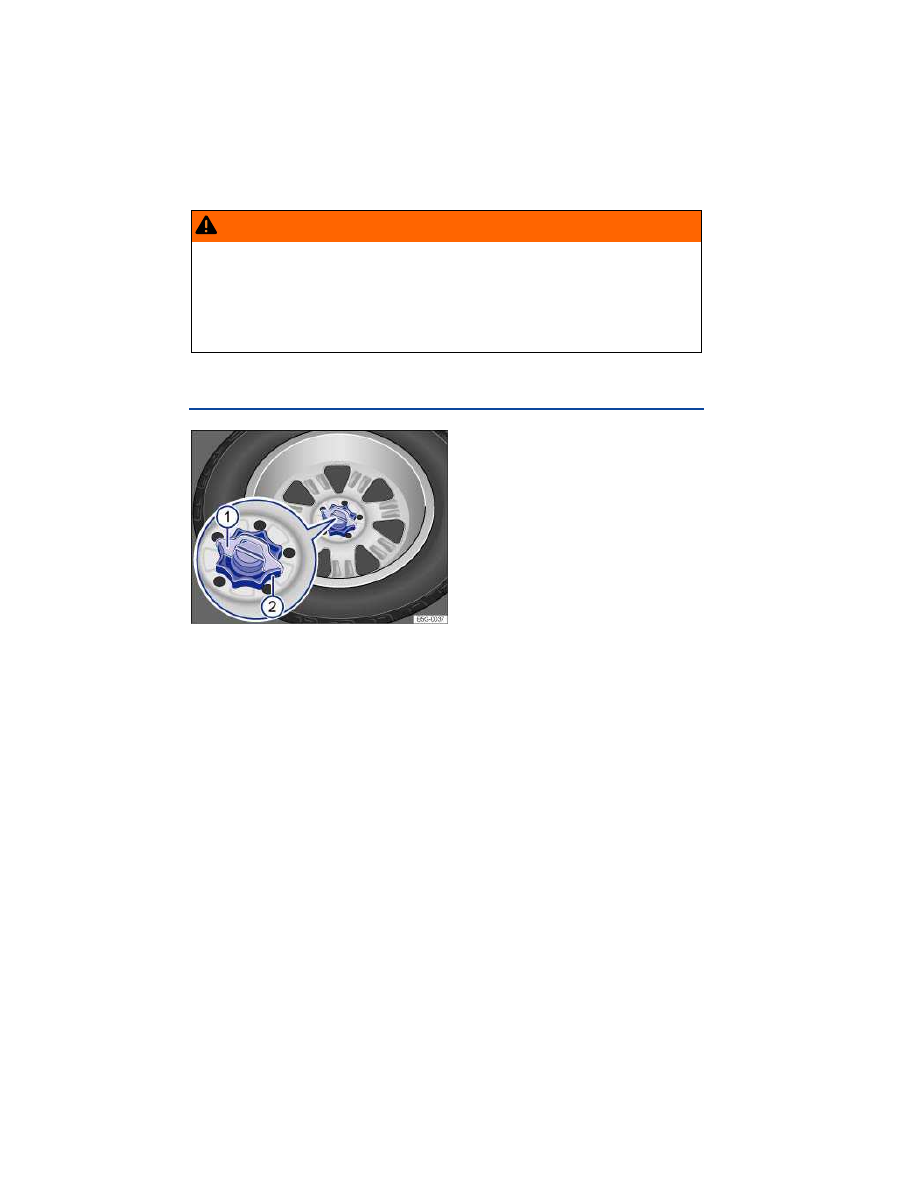Volkswagen e-Golf (2015 year). Manual - part 11

Driving style – Fast cornering, hard acceleration and braking increase tire wear. If you experience
increased tire wear under normal driving conditions, have the vehicle suspension checked by an
authorized Volkswagen dealer or an authorized Volkswagen Service Facility.
Unbalanced wheels – The wheels on a new vehicle are balanced. When driving, however, various
conditions can cause a wheel to become unbalanced. Unbalanced wheels can cause wear to the
steering and suspension systems. Have all wheels rebalanced. A wheel must always be rebalanced if
a new tire has been mounted.
Wheel alignment – Incorrect wheel alignment causes excessive and uneven tire wear, impairing
vehicle safety. If you notice excessive or uneven tire wear, have the wheel alignment checked by an
authorized Volkswagen dealer or an authorized Volkswagen Service Facility.
WARNING
Unusual vibrations or pulling to one side can indicate tire damage.
Reduce speed immediately and stop when it is safe to do so.
Check tires and wheel rims for damage.
Never drive with a damaged tire or rim. Get expert assistance instead.
If no external damage is visible, slowly and carefully drive to the nearest authorized
Volkswagen dealer, authorized Volkswagen Service Facility, or other qualified workshop and
have the vehicle checked.
Spare wheel or compact spare wheel
Fig. 101 In the luggage compartment: Handwheel holding the spare wheel in place (if equipped).